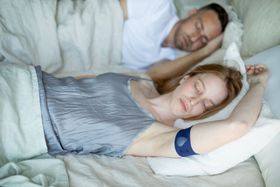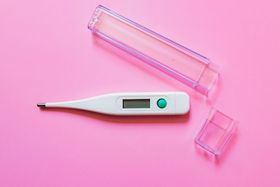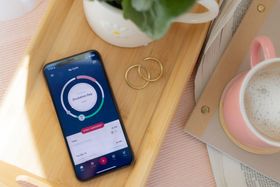What You Need to Know Before Buying an Ovulation Monitor
Published February 5, 2025

Recently, wearable ovulation or fertility monitors have become a popular option for people curious about their fertility, whether they want to get pregnant or avoid pregnancy.
These monitors or trackers have started to be mentioned regularly on social media, with influencers and popular social media accounts promoting them on their profiles. While there are many benefits to wearable ovulation or fertility monitors or devices, one important note to make is that not all are created equal.
Today's blog post will cover what are some of your options when looking for a basal body thermometer, or a wearable fertility tracker. And why, regardless of what you choose to buy, educating yourself in any method of fertility awareness is essential to get you started.
What is a wearable ovulation monitor?
There are several options for those who want to measure their basal body temperature for tracking fertility. The most basic way to measure is to take your temperature orally or vaginally with a traditional basal body thermometer. While this is an effective way to measure your daily temperature, to use this method properly, you must:
- wake up early at the same time each morning;
- take your temperature after at least three hours of sleep;
- take your temperature before you get out of bed.
Complying with the requirements of the method daily may be difficult for some people. If this is you, you may benefit from a wearable ovulation tracker, which doesn't require you to wake up at the same time each morning.
Tempdrop is a wearable basal body thermometers that continually monitors your axillary temperature overnight to calculate your nightly sleeping temperature. It also excludes any outside "noise" that may interfere with an inaccurate reading, such as irregular sleep patterns, consistent sleep disturbances, night out with the girls or other external effects, and even different sleep positions or your ceiling fan. You wear Tempdrop all night long, and when you wake up, it determines your most accurate basal body temperature!
Why do I recommend Tempdrop for tracking your fertility? Simply because other wearable thermometers are not accurate enough to be relied on for measuring ovulation. Such monitors include wearable devices that take your wrist temperature that is not a reliable measure of basal body temperature as it is subject to so many variables.
Other wearable thermometers may also predict ovulation or claim to do the charting for you - read on for why this is problematic.
What about other fertility interpretations and predictions?
Many wearables come with an app or chart that will interpret or predict your results telling you when you are fertile or not. The issue with these types of thermometers is that they are only relying on your temperature, neglecting other fertility signs like cervical mucus. And while Basal body temperature is excellent for confirming ovulation after it has happened, nevertheless, basal body temperature on its own can't predict ovulation.
Therefore, I advise my clients to stay away from a device or app that claims to do the charting or predict ovulation based solely on basal body temperature. Especially when avoiding pregnancy with fertility awareness, you want to be sure that you are accurately tracking your fertility.
With fertility awareness-based methods, having an understanding of what exactly you are charting and how that works is essential. I love Tempdrop because it does not predict or claim to do the charting for you. It requires you to chart your temperatures and have a base understanding of your cycle. With Tempdrop, you sync the device to the Tempdrop app each morning to access your basal body temperature reading. You can then take that reading and input it into a paper chart or app, and interpret the temperature with the method of your choosing.
Tracking your cycle accurately with basal body temperature means that you have to educate yourself around how that works. Charting and tracking include understanding your hormones, your cycle, and your fertility biomarkers. Don't believe anyone who tells you that you can't do this or it is too complicated. Learning about your cervical mucus and your basal body temperature isn't hard - we just aren't taught how to interpret it.
Take the time to learn about fertility awareness, whether it is reading a book, downloading Tempdrop's guide to fertility awareness, or taking a course. This information will go with you for your entire reproductive life.
Learning how your body works and how to track your fertility signs is not difficult. It carries so many benefits! Don't be tempted by devices that claim to do the charting for you so "you don't have to" You are capable of learning how to do this on your own, and this process is incredibly empowering.




